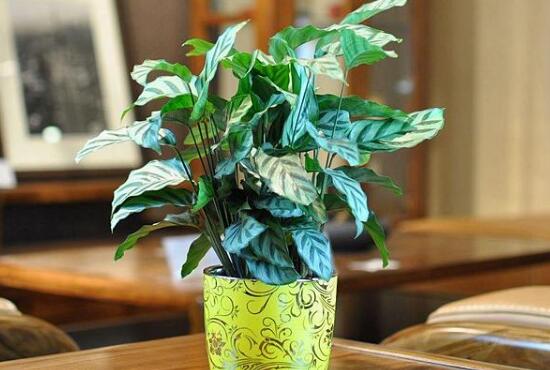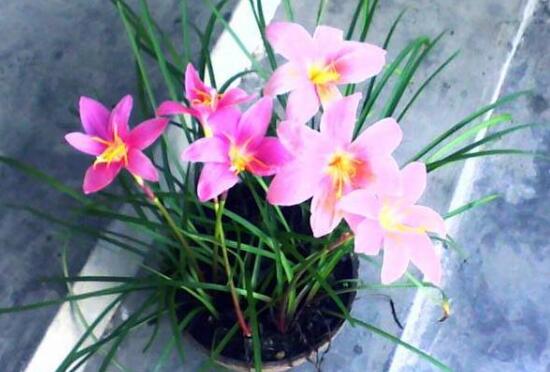How to water peacock taro? how often do peacock taro water / spring, summer, summer, winter and ten
Peacock bamboo taro, a common foliage plant, especially its leaves, with the pattern of peacock opening screen, looks very beautiful! However, if you want the beauty of peacock taro, watering is extremely critical, so how to water peacock taro? How often is the peacock taro watered? In this regard, according to the growth habits of peacock bamboo taro, the editor summarized the four seasons watering methods of peacock bamboo taro.
1. How to water peacock taro and water it frequently

Peacock bamboo taro likes a humid environment and has high requirements for moisture, so watering should be done frequently in order to keep the basin soil moist. However, it is easy to say, but difficult to do, because watering is easy to pour too much, resulting in stagnant water in the basin, resulting in peacock bamboo taro leaves yellowing, curling and other symptoms. Therefore, the method of watering peacock taro is very important.
Second, how often is the peacock taro watered, the watering method of the four seasons
Tell whether it should be watered or not: for beginners, it is difficult to water peacock taro because it is difficult to know when. In this regard, we can look at the degree of wetness of the basin soil, if the surface is slightly dry, you can water once in three days, if the soil is not loose, the amount of water should be less.
1. Spring watering, 5 days per time
Peacock taro is a kind of water-loving plant. In the process of growth, flower friends need to give it plenty of water. How often is the peacock taro watered? In spring, water can be watered once in about 5 days, and pay attention to observe the dry and wet degree of basin soil.
2. Summer watering, 2-3 days per time
In summer, when the temperature is high and the water evaporates quickly, the interval between watering peacock taro is short, generally watering it every three days; of course, this interval is not fixed, mainly determined by the degree of dryness and wetness of the basin soil. if the basin soil dries quickly after watering, it can be watered once every two days.
3. Autumn watering, 5-7 days per time
In early autumn, the temperature is not so low, and it can be watered every 5 days at the same frequency as in spring, but in late autumn, the temperature will be very low, so it is necessary to extend the watering interval, usually every 7 days.
4. Watering in winter, 10 days per time
When winter comes, the temperature will drop sharply, and the water in the basin soil will evaporate very slowly, so how often do peacock taros be watered? Although the growth of peacock taro is slow at this time, it also needs water and can be watered every 10 days.
Generally speaking, the breeding method of peacock taro is very simple, but attention must be paid to watering: watering once every 3-7 days to keep the basin soil moist. Watering is a technical job, flower friends can not be in a hurry, raise for a period of time to slowly learn. With regard to the watering method of peacock taro, the editor has introduced this, hoping to give you some help.
How to water peacock bamboo taro, once a few days
Plants can not grow without water. Whether the watering method is right or not will have a great impact on the growth of plants. Peacock bamboo taro is an indoor ornamental plant, and many flower lovers like to raise it at home. This article introduces how to water peacock bamboo taro, once every few days.
How to water peacock bamboo taro
1. Peacock bamboo taro, sexual preference for semi-overcast and high-temperature and humid environment. It is required that the soil is loose, rich in biomass and well drained.
2. Peacock taro should be given sufficient water during the growing period, especially in summer and autumn, in addition to keeping the basin soil moist, it is also necessary to spray water to the leaves to cool and moisturize; it requires a higher air humidity, preferably up to 70% to 80%; avoid dry air and dry basin soil, but do not accumulate water. Moisture should be controlled after the end of autumn in order to resist cold and survive the winter. Keep the dry environment in winter, if it is too wet, the basal leaves will be yellow and scorched, which will affect its ornamental value.
3. To put it simply: take a look at the soil used first. If it is loose nutritious soil or sandy loam, it should be watered every 3 days or so because it seeps quickly. If you use relatively sticky or hardened soil, wait until the basin soil is basically dry before pouring. It is difficult to judge whether it is dry or not, so it is recommended that you change to a looser soil.
Through the above introduction, I believe you already know how to water peacock taro. The editor reminded that when raising peacock taro, the basin soil should not be completely dehydrated, nor should it accumulate water for a long time. On sunny days, especially in dry days, spray water on the leaves every day to keep the surrounding air moist.
How to water the cat's eye taro how often do you water the cat's-eye taro
Cat's eye taro is a kind of plant native to warm and humid areas, so the requirement of water content of cat's eye taro is relatively high. Planting any plant to water is a very important element, and for wet plants such as cat's eye taro, watering is a very important thing.
How to water the cat's eye taro?
In the growth period of cat's eye taro, it is necessary to fully water the soil and keep the soil moist. At the same time, we should also pay attention to avoid causing stagnant water in the soil, so as not to cause rotten roots and even cause plant death. As the leaves of the cat's eye taro are larger and the water evaporates quickly, it is necessary to maintain a high air humidity around it. The leaves can be sprayed frequently to keep the air around the leaves moist, which is beneficial to the growth and extension of the leaves. Once the leaves are found to curl and atrophy, it means that the plant is in a state of lack of water.
How often is the cat's eye taro watered?
Watering every ten days and changing the basin every other year, it is appropriate to choose a slightly acidic soil with rich humus, which is fertile, loose, good in air permeability and drainage.
The function of Cat's Eye Taro
1. Ornamental value
Cat's eye bamboo taro has the characteristic of shade tolerance and is easy to feed. At the same time, it has a beautiful growth form: the plant is in a cluster shape as a whole, the leaves are broad and dense, and show an outstretched and erect appearance. Because there are white bands and dark green belts intertwined into pinnate arrangements on both sides of the main veins of the leaves, the colors are bright and colorful. In addition, its leaves are covered with black spots, just like the eyes of a panda, round and interesting, which is the origin of its name. To sum up, cat's eye taro is suitable for home decoration and beautification, used to adorn balcony, study, bedroom and so on, to add a sense of elegance. It can also be used to decorate commercial places, such as shops and hotels. In South China, it is often seen to be planted in courtyards, parks, roads and other places for landscaping.
2. Purification effect
Purifying the air is also a major role of cat's eye taro. Although it cannot be compared with the hanging orchid, the role of cat's eye taro in purifying the air should not be underestimated. The efficacy of cat's eye taro in absorbing formaldehyde, ammonia and other harmful gases is far better than that of many plants. Therefore, for the newly decorated house, cat's eye taro is also a good choice.
The difference between cat's eye bamboo taro and peacock bamboo taro
1. The plant morphology of peacock taro is different from that of cat's eye taro.
Cat's eye bamboo taro plant is as high as 100 centimeters, because it is shaped like an arrow feather, so it is also known as arrow feather taro. The back of cat's eye taro leaves are brown or purple, the leaves are slender, the leaf spots are round, and the leaf edge is wavy. Cat's-eye bamboo taro head, bracteoles membranous, capsule dehiscent into 3-valved, triangular seeds, yellowish flowers. And peacock bamboo taro plant height can reach 60 centimeters, peacock bamboo taro leaves are wide and short, spots slender. Leaf blade thinly leathery, petiole purplish red, ovate-elliptic. There are dark green and white or yellowish feather markings on the leaves, just like the pattern on the peacock tail feathers, hence the name. And the peacock taro leaves stretch during the day and fold up at night, which is its unique feature.
2. The suitable temperatures of peacock taro and cat's eye taro are different.
The suitable growth temperature of Amorphophallus maoyan is 18-21 ℃ in daytime and 16-18 ℃ at night. The suitable temperature for growth is 20-30 ℃, and the safe temperature for overwintering is 10 ℃. When cultivating peacock taro, the temperature should be kept at about 12-29 ℃, and the winter temperature should be kept at 16-18 ℃.
3. The flower language of peacock taro is different from that of cat's eye taro.
Cat's eye taro represents temptation. The flower language of peacock bamboo taro is the brilliance, beauty and arrogance of beauty.
4. The main values of peacock taro and cat's eye taro are different.
Both cat's eye taro and peacock taro can be used for indoor layout, landscaping and potted leaf cutting. In addition, the peacock bamboo taro rhizome contains starch, but also edible, with diuresis, clearing lung heat and other effects.
The cat's eye taro is watered about once every ten days to keep the soil moist. At the same time, the cultivation of cat's eye taro should choose the soil with loose soil and good air permeability, which can effectively prevent the accumulation of water in the soil from causing rotten roots. Generally speaking, cat's eye taro is a kind of plant that is easy to raise.
- Prev

What about the yellowing of orchid leaves? control watering, appropriate amount of fertilization / change of basin soil to recover quickly.
Wind and rain orchid, a very beautiful flower, is shaped like a trumpet and has various colors. It is particularly beautiful against the green leaves. But in the maintenance process, many flower friends keep the leaves yellow, then the wind and rain orchid leaves yellow how to do? At this time, flower friends must calmly find the cause, and then deal with it accordingly.
- Next

How to raise Anoplophora acuminata? breeding methods and precautions / sufficient light should be needed.
Among the plants that can observe both leaves and flowers, it is relatively easy to breed. It is not only easy to raise, but also has many effects and functions, so it is very popular, but it still needs to master some skills before breeding.
Related
- Fuxing push coffee new agricultural production and marketing class: lack of small-scale processing plants
- Jujube rice field leisure farm deep ploughing Yilan for five years to create a space for organic food and play
- Nongyu Farm-A trial of organic papaya for brave women with advanced technology
- Four points for attention in the prevention and control of diseases and insect pests of edible fungi
- How to add nutrient solution to Edible Fungi
- Is there any good way to control edible fungus mites?
- Open Inoculation Technology of Edible Fungi
- Is there any clever way to use fertilizer for edible fungus in winter?
- What agents are used to kill the pathogens of edible fungi in the mushroom shed?
- Rapid drying of Edible Fungi

